Virtual reality (VR) is a computer-generated simulation of a three-dimensional environment that can be interacted with in a seemingly real or physical way by a person using special equipment, such as a headset with a screen, or other types of motion or positional tracking devices. VR allows the user to experience and explore a simulated environment as if they were physically present in it.
In a VR experience, the user wears a headset that displays a 3D image or video and may also include sensors that track the user’s head movement and allow them to look around the virtual environment. Some VR systems also include hand-held controllers that the user can use to interact with the virtual environment in a more natural way, such as by reaching out to touch objects or by making hand gestures.
There are many applications for VR, including gaming, training and simulation, education, and entertainment. VR technology has the potential to change the way we interact with computers and the world around us and has already been used in a variety of fields, including healthcare, architecture, and the military.
혼합현실, 증강현실, 가상현실의 차이점
혼합 현실은 포괄적인 용어로 생각할 수 있는데, 증강현실(AR)과 가상현실(VR)을 아우르는 스펙트럼 이라고 생각하시면 됩니다.


증강 현실에서는 투명한 렌즈(예: Microsoft HoloLens, Magic Leap) 또는 전면에 달린 카메라(Meta Quest Pro)를 통해 디지털 그래픽이 우리 주변의 실제 세계 위에 오버레이됩니다. 안경을 쓴 것처럼 여전히 물리적 환경을 볼 수 있습니다.
증강 현실을 사용하면 물리적 환경과 물체를 볼 수 있으므로 응용 프로그램은 디지털 정보로 현실 세계를 향상시킵니다. 안내 교육, 길 찾기 및 3D 모델 검토는 AR의 좋은 예 중 일부입니다.
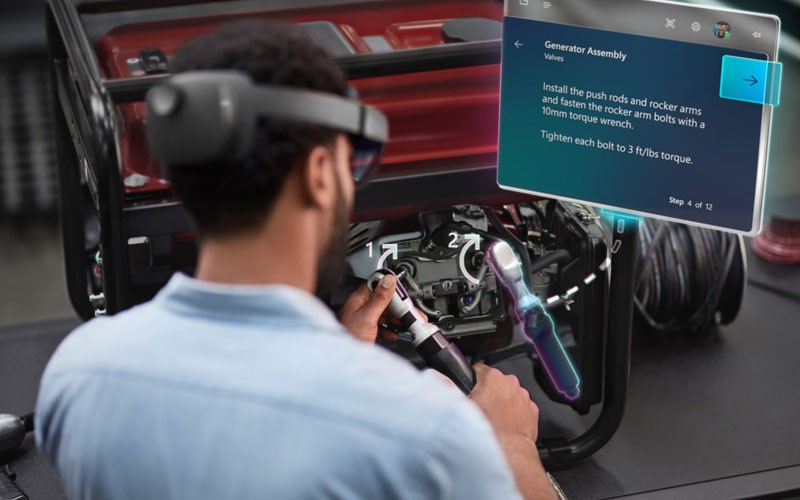
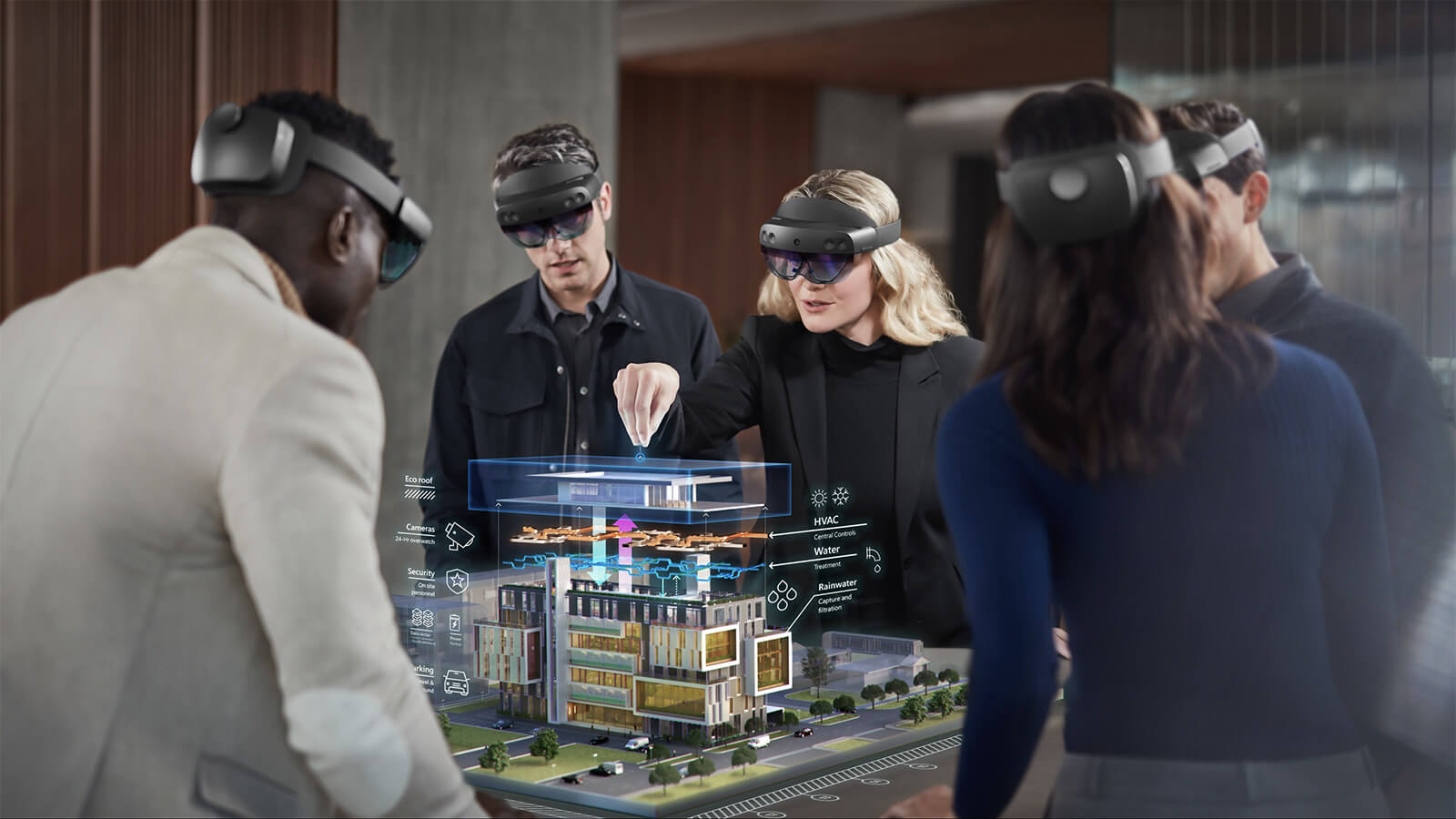
가상 현실에서는 디지털 세계로 둘러싸인 불투명 디스플레이(Meta Quest, HTC Vive, Samsung Odyssey)로 눈이 완전히 가려집니다. 주변을 볼 수 없으며 가상 세계에 완전히 몰입합니다.
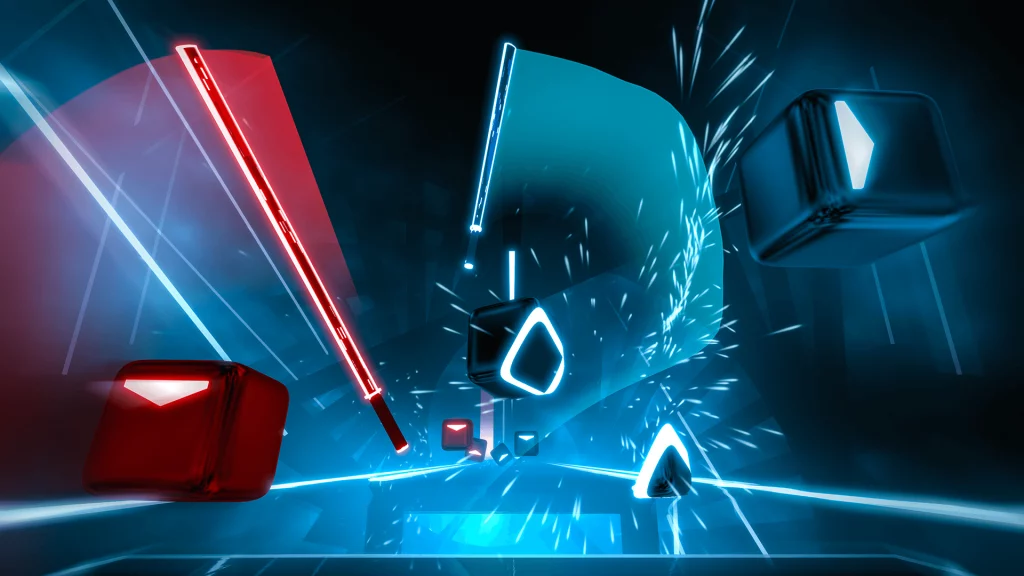
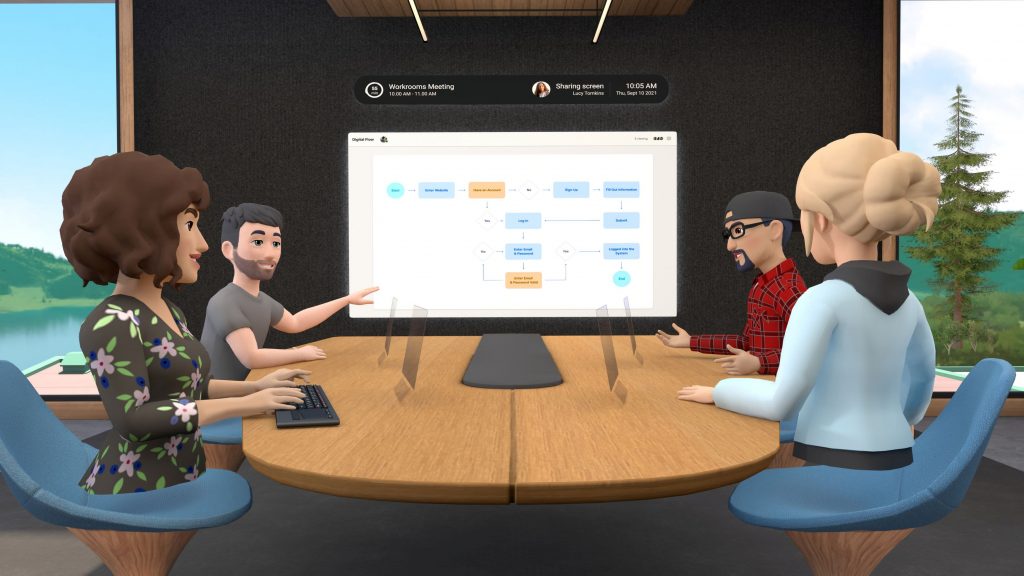
VR is often used for entertainment, education, training, and other applications where users need to be fully immersed in a simulated environment. AR is often used for practical applications such as navigation, product visualization, and maintenance, where users need to be able to see and interact with both the real and virtual worlds at the same time.
Key elements of Virtual Reality
트래킹 (Tracking)
In order to create a sense of immersion and allow for interactivity, the user’s movements and position must be tracked in the virtual environment. This is often done using sensors and other tracking technologies. Earlier VR devices required external sensors mounted on the walls to track the position of the users. However, most of the recent VR devices are now using inside-out tracking techniques that leverage multiple cameras attached to the headset.
Simultaneous Localization and Mapping (SLAM) is a technology that allows a device to create a map of its environment while simultaneously determining its own location within that map. This enables the device to navigate and understand its surroundings in real time. Please check out the article ‘What is SLAM (Simultaneous Localization and Mapping)?’
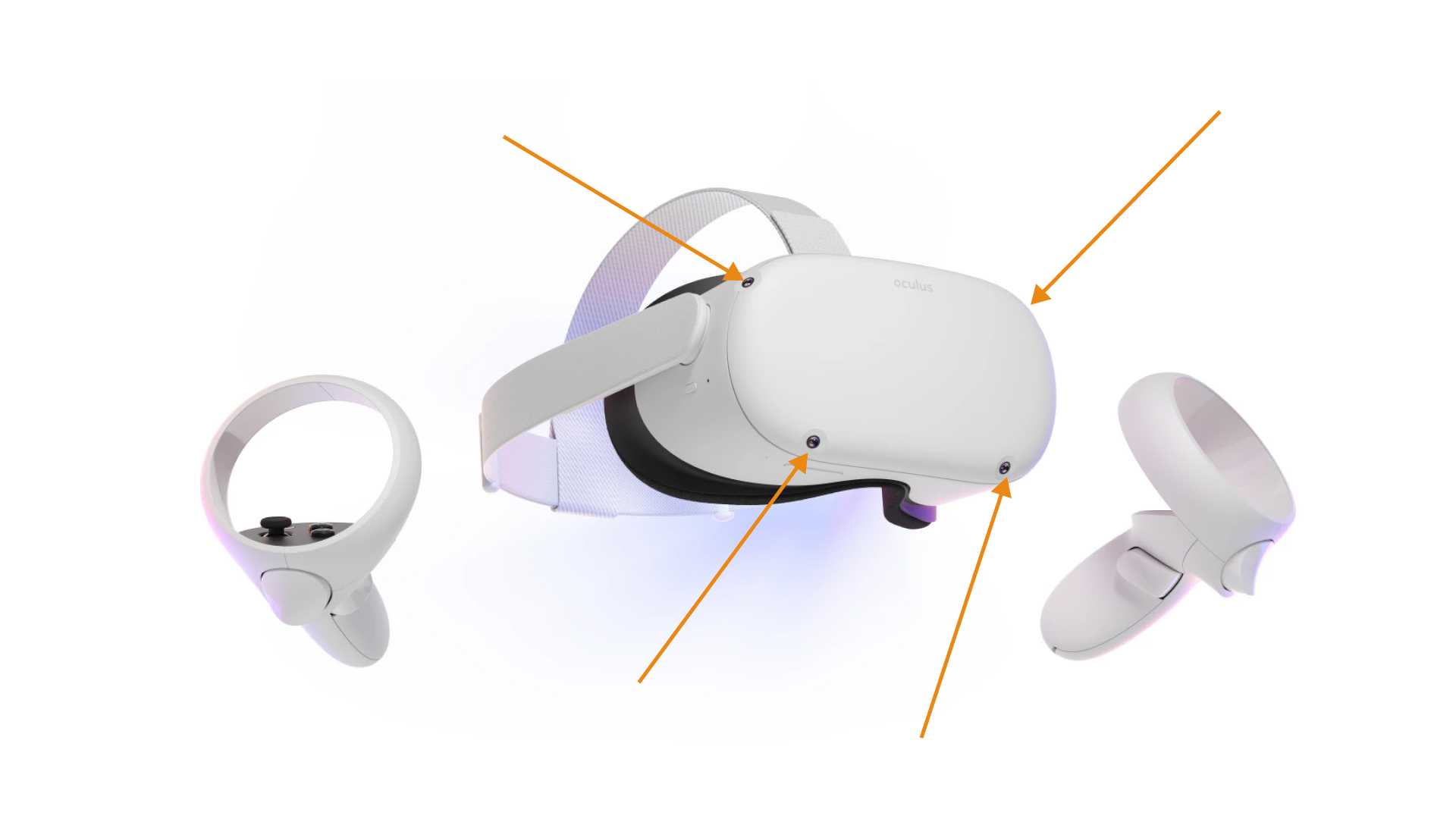
인풋 (Input)
Virtual reality experiences allow the user to interact with the virtual environment in a variety of ways, using specialized equipment such as controllers or gloves fitted with sensors. Recent VR devices support more natural interactions through hand-tracking, eye-tracking, and speech input. As technology advances, more natural interactions are becoming possible allowing users directly interact with digital objects with their hands or use multi-modal input by combining multiple input methods.
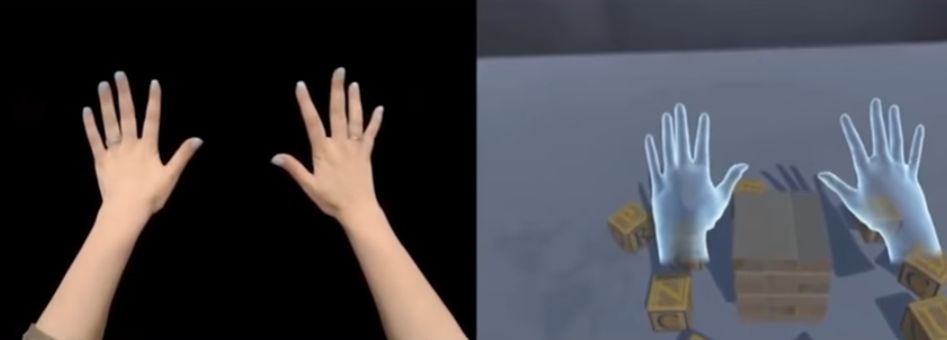
Virtual Environment
This is the simulated three-dimensional space in which the user is immersed. It can be a realistic or fantastical world and can include elements such as landscapes, buildings, objects, and characters.
공간 오디오 (Spatial Audio)
Spatial audio is a type of sound that is designed to create a sense of immersion and presence in a virtual reality (VR) environment. It works by simulating the way sound behaves in the real world, taking into account the location and orientation of the user, as well as the position and characteristics of virtual objects and characters in the environment.
Spatial audio can be used to create a realistic and immersive soundscape in a VR experience, allowing the user to hear sounds coming from different directions and distances as if they were really there. This can enhance the sense of immersion and presence in the virtual environment and make it feel more realistic.
Spatial audio can be experienced through headphones or other specialized audio equipment, and it is often used in conjunction with visual and haptic (touch) stimuli to create a fully immersive VR experience. It is an important aspect of many VR applications, including entertainment, education, training, and more.
혼합현실이 실제 활용되고 있는 사례들
Entertainment
VR is often used in the entertainment industry, including in video games, movies, and other forms of media. It can be used to create immersive and interactive experiences that allow users to explore and interact with virtual worlds and characters.
Education and training
VR is increasingly being used in education and training as a way to simulate real-world scenarios and environments. It can be used to teach practical skills, such as surgery or piloting an aircraft or to provide educational content in a more engaging and interactive way.
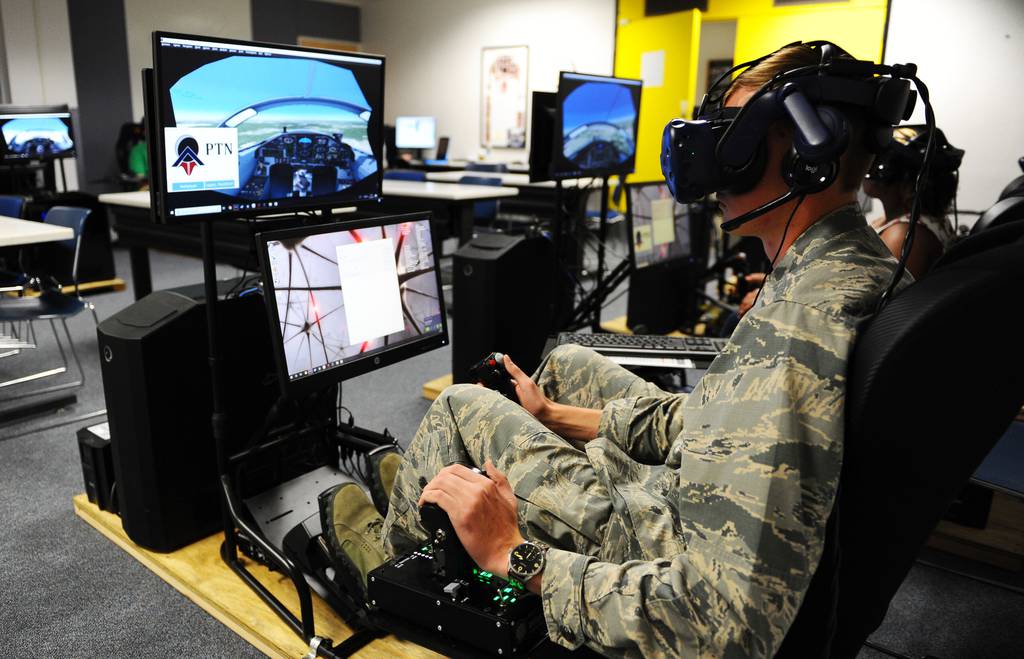
Medicine and therapy
VR is being used in the medical field to treat a variety of conditions, such as anxiety, phobias, and chronic pain. It can be used to provide exposure therapy and other types of treatment in a controlled and safe environment.
Design and prototyping
VR is often used in the design and prototyping process to allow designers and engineers to visualize and interact with 3D models and concepts. It can be used to test and refine designs before they are built or manufactured.
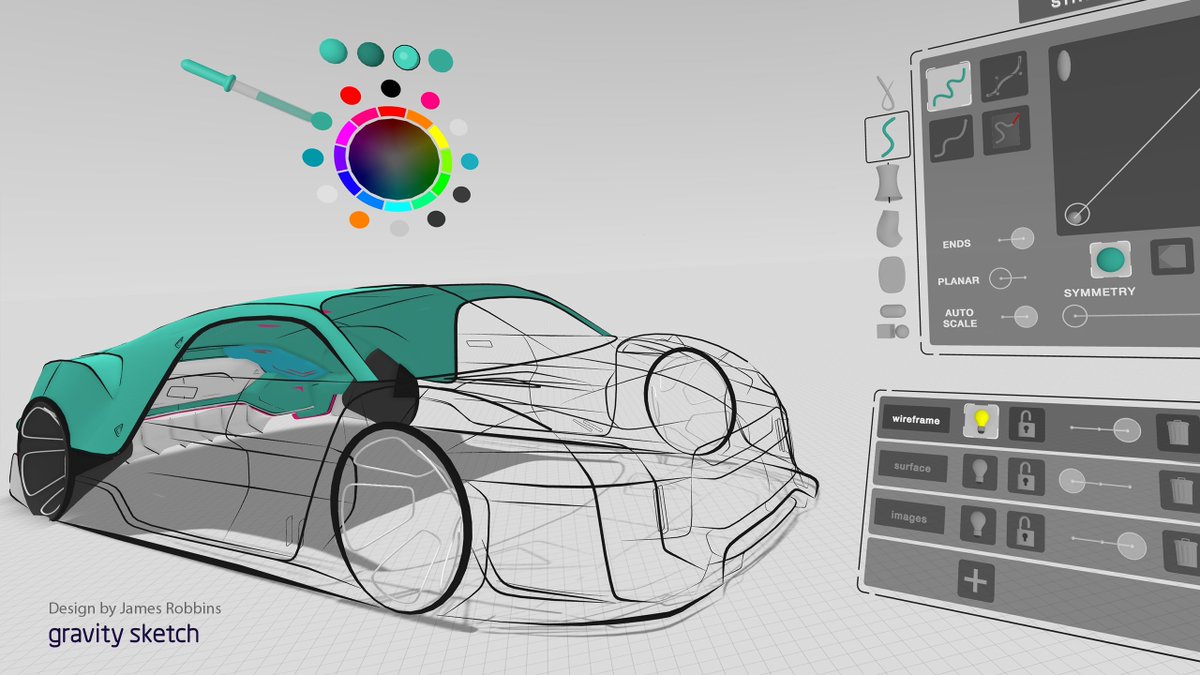
Tourism and travel
VR is being used in the tourism and travel industry to allow people to experience virtual tours and attractions or to plan and preview trips before they are taken.

